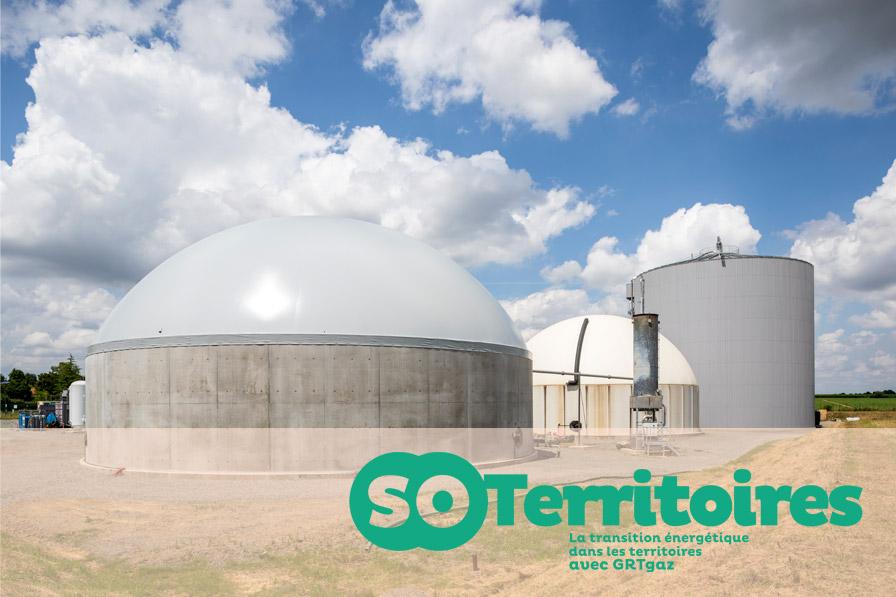Anaerobic digestion: making new projects more acceptable

French biomethane production has seen questions asked throughout the course of its development. In 2021, 365 sites produced the equivalent of 1% of French gas consumption, with 6.4 TWh of installed production capacity. A study carried out by GRTgaz in the Auvergne-Rhône-Alpes region focussed on stakeholders’ concerns and the levers used to increase the acceptability of future production units. Decoding
In its report on “Anaerobic Production in the Energy Mix”, the French senatorial fact-finding mission made the case in September 2021 for the creation of a “French model” in this field. This model would include the majority of medium-sized local projects, with a core priority being to control the negative impacts. French people are now generally behind the rapid growth of an efficient biogas sector. Likewise, there is general agreement that this should happen in harmony with the French farming model, sustainability requirements and with respect for local populations.
As we know, any new energy raises questions. The acceptability of future anaerobic digestion projects has become a national and above all regional challenge. How does opposition to projects take shape? What can we do to avoid it? To shed some light on the issue, GRTgaz carried out a field survey in collaboration with GRDF, the Auvergne-Rhône-Alpes Energy and Environment Agency (AURA-EE) and the French Regional Directorate for the Environment, Land Planning and Housing (DREAL).
“It is fair to ask questions when a project starts up near to your home. Elected officials and local populations have the right to scrutiny.”Léana Fiorito
GRTgaz anaerobic digestion Chargée de Mission
The need for transparency
“As with any new practise, there are examples of badly managed production units,” recalls Léana Fiorito, the GRTgaz Chargée de Mission behind this 40-interview survey. “Unsurprisingly, the risk and disturbance aspect is ubiquitous among opponents, whose arguments are centred on ideas of safety, health, peace, identity and attractiveness. When dialogue breaks down, there is a high risk that these fears grow into conflict.”
However, these uncertainties do not explain everything. Potential opposition also comes from people calling into question state-led actions, or even an objection to the participation conditions. In this case, opponents express a desire for transparency and democratic process. “The unfulfilled need for answers is one of the most powerful drivers of conflict,” stresses Léana Fiorito
What role do local elected officials play in this equation?
Despite decision-making powers that are sometimes limited when it comes to agricultural anaerobic digestion, elected officials can nevertheless act as facilitators. Sometimes, and increasingly, they can find themselves caught up in a local debate that is suddenly exploited by national-level movements fighting a political cause.
53,000
The number of jobs expected to be created by the anaerobic digestion sector by 2030, according to the “favourable” scenario.
Source: French senatorial fact-finding mission on “Anaerobic Digestion in the Energy Mix: Challenges and Impacts”.
The early involvement of elected local officials is key
Opposition to projects is thankfully far from standard. The many anaerobic digestion units that emerge unopposed show that dialogue, transparency and early interaction are the ways to prevent conflict. Léana Fiorito also noted that the risk of opposition decreased when an elected official took early measures to ensure that local populations are kept properly informed.
Some mayors even use the project to increase the value of their region. “A mayor told me that he viewed it as an opportunity, with a focus on developing local renewable energies,” she said.
The benefits of biogas production need to be better understood. By bringing additional income to farmers, anaerobic digestion increases the attractiveness of the profession and gives support to agriculture in the region. A project that forms part of a genuine local circular economy (with the presence of a bioNGV refuelling station or the use of local biowaste as inputs) will be much better received by the local population.
Finally, showing how things are on the ground is an effective way of helping people overcome their fears. Visits to anaerobic digestion units or meetings between project owners, elected officials and inhabitants are an excellent way of initiating discussions and promoting the ways that anaerobic digestion can benefit the region. The “most direct form of contact will always be the best received,” concludes Léana Fiorito. “Following this type of initiative, some local people have decided to take down signs expressing opposition from outside their homes.”
